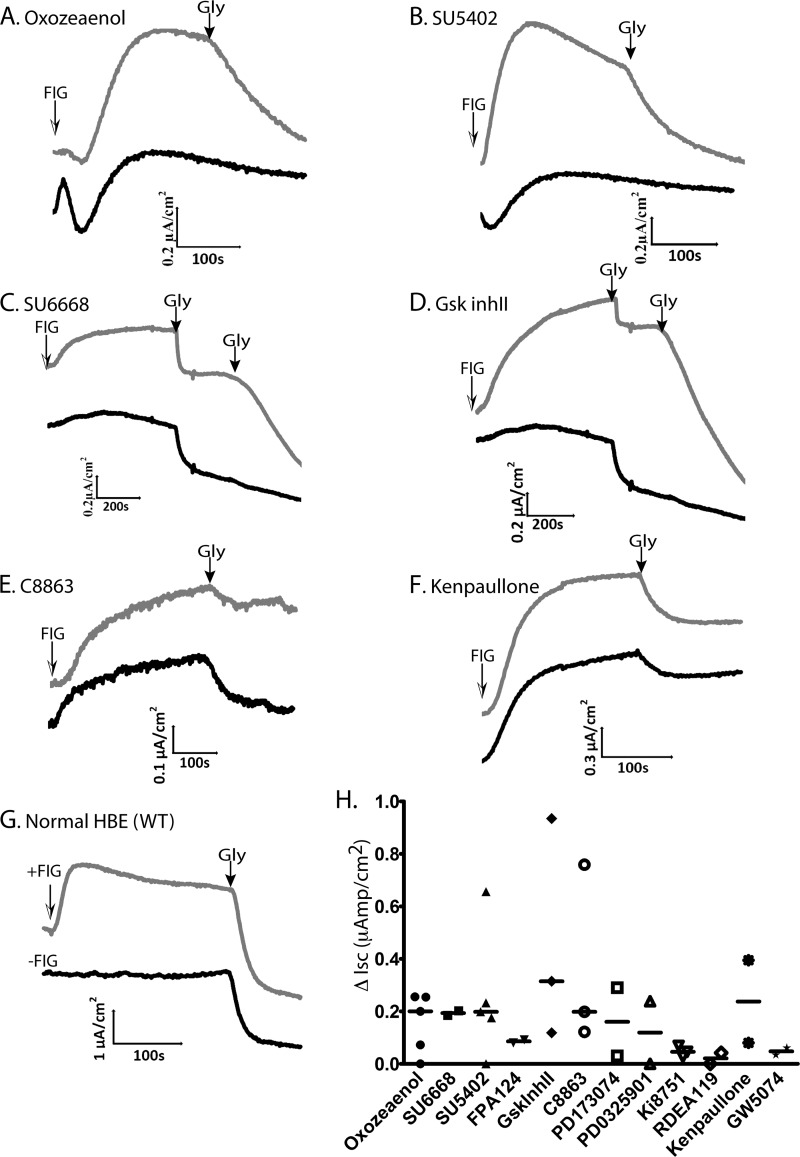Fig. 5.
Effect of compounds treatment on ΔF508-CFTR activity in primary Human Bronchial Epithelial (HBE) cells harvested from lungs of ΔF508/ΔF508 homozygote patients undergoing lung transplant. Representative short-circuit currents (Isc) mediated by ΔF508-CFTR human bronchial epithelial (HBE) monolayers treated with vehicle (DMSO) alone, or 10 μm (A) (5Z)-7-oxozeaenol, (B) SU5402, (C) SU6668, (D) GSK-3β Inhibitor II, (E) 7-Cyclopentyl-5-(4-phenoxyphenyl)-7H-pyrrolo[2,3-d]pyrimidin-4-ylamine (C8863), (F) Kenpaullone, for 48 h prior to analysis in Ussing chambers. ENaC sodium channels were inhibited with 10 μm amiloride; non-CFTR chloride channels were blocked with 250 μm DNDS. CFTR currents were stimulated with FIG (25 μm Forskolin, 25 μm IBMX and 50 μm Genistein) as indicated, and after the indicated times (black arrows) inhibited using 15 μm (panels A, B, E, F) or 50 μm (panels C, D) GlyH-101 (Gly). In panels C and D, half of the Gly solution (25 μm) was added twice sequentially, as indicated. G, Representative short-circuit currents mediated by HBE cells from non-CF controls (WT-CFTR). H, Summary of increase in short-circuit currents (ΔIsc) in HBE cells stably expressing ΔF508-CFTR that were treated by analyzed compounds. Data from individual patients are shown. Where several replica were tested from the same patient (see Table I), the average value is shown. Bars represent median values. The baseline currents (before amiloride addition) ranged between 6–20 μAmp/cm2 for WT-HBE and 19–40 μAmp/cm2 for ΔF508-CFTR HBE. After adding amiloride, the currents for both WT and ΔF508-CFTR HBE were ∼0–3 μAmp/cm2.

